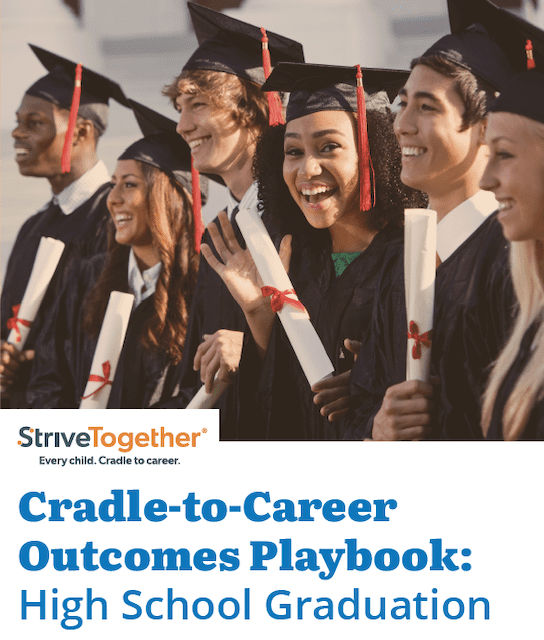OUTCOMES PLAYBOOK
High School
Graduation

High school graduation is a vital step toward economic stability, independence and opportunity. A diploma can open doors to college, career training, military service and jobs with benefits and upward mobility. Yet, persistent gaps in graduation rates — especially for Black, Latine and disabled students — reflect disparities in education access and quality.
The StriveTogether Outcomes Playbook: High School Graduation is a comprehensive guide to the latest research and best practices for this outcome, made possible by support from the Gates Foundation. Communities can use the playbook to identify local needs, prioritize areas for collective action and improve strategies.
What Does High School Graduation Mean?
Technically, graduating from high school means earning a diploma, verifying that students have taken and passed a set of requirements, including several years of math, English, science, history and electives. High school graduation also marks a major life transition and signals a student’s readiness for the next phase of life, beyond the completion of course requirements. While a diploma verifies completion of subjects like math, English, science and history, it must also signal that students are equipped to navigate college, career or adult life with confidence.
Graduation reflects more than the completion of minimum requirements — it signals true preparation. Every student should leave high school with the knowledge, confidence and tools to thrive. This kind of readiness is essential to expanding opportunity and strengthening communities.
How to Use the High School Graduation Playbook
Mathematica’s Education-to-Workforce Framework is the inspiration behind the playbook’s organization and content. The playbook provides research-based guidance to help community leaders:
- Identify priorities
- Track key indicators to measure community-level progress
- Design strategies with stakeholders
- Build collective support for investments in high school graduation outcomes
How the High School Graduation Playbook Complements Mathematica’s Education-to-Workforce Framework
The playbook supplements the Education-to-Workforce Framework by incorporating research on early childhood reading development, strategies for improving high school graduation rates, the need for high-quality, trained representative educators and more. 76% of the indicators, practices and policies (55 out of 72 total) included in the High School Graduation Playbook come from the Education-to-Workforce Framework.

